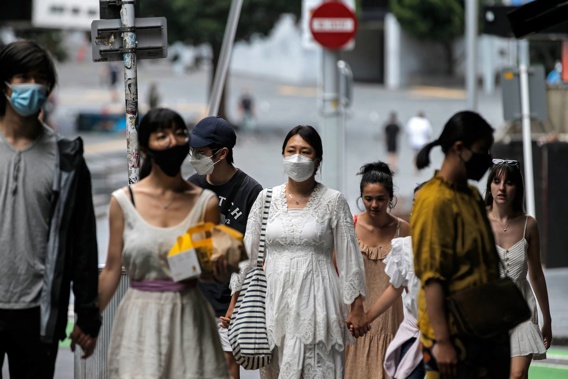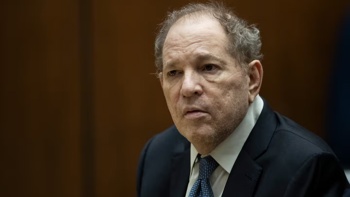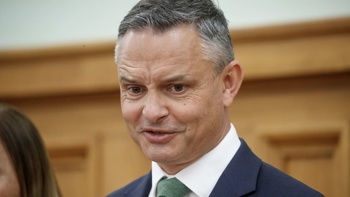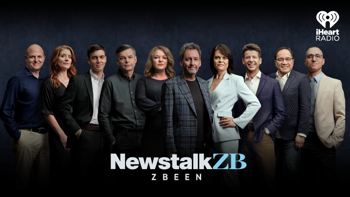
The Government's push to boost accessibility to Rapid Antigen Tests (RATs) and masks is being hindered by improper mask use and under-reporting of positive results.
It has prompted pleas from the country's top health officials to follow advice designed to slow the advance of Omicron's BA.5 subvariant that now accounts for almost half of reported cases.
Covid-19 Response Minister Dr Ayesha Verrall has stopped short of reinstating a mask mandate in schools - a decision strongly criticised by one expert who believes a mandate is essential to reduce virus transmission.
And doctors say if new Covid-19 measures fail to work, they could be faced with making drastic decisions about which urgent patients to treat, RNZ reports.
A total of 11,382 new Covid cases were reported yesterday, alongside 23 virus-related deaths. Of those who had died, one was less than 10 years old.
Director general of health Dr Ashley Bloomfield said yesterday only half of all cases were believed to be reported - backed up by recent wastewater results that indicated there was more virus in the community than was known.
During what was considered New Zealand's second Omicron wave, Bloomfield expected reported cases to peak at 21,000 per day - and hospitalisations to peak at more than 1000.
Yesterday, Verrall and Bloomfield announced a raft of decisions aimed at limiting cases and therefore easing the pressure on a creaking healthcare system.
Chief among them was offering free medical-grade masks alongside free RAT kits at test collection sites.
People no longer needed to have symptoms or be a household contact to access free RATs.
/cloudfront-ap-southeast-2.images.arcpublishing.com/nzme/G5XQP4GDSUIDVMDQI3GMFL2WP4.jpg)
Masks were currently mandatory on public transport, in shops and at aged care facilities. Photo / NZME
Surgical-grade masks - N95s and P2s - would also be given to those who qualified as vulnerable.
Access to antiviral drugs - designed to keep Covid-positive people out of hospital - had also been expanded, with about 400,000 more New Zealanders eligible.
From next week, people over 75 years old with the virus could be supplied the drugs through their GP.
At yesterday's press conference, Verrall continued the Government's message that a move from the orange traffic light setting to red was not necessary as it would only offer "an incremental benefit".
Bloomfield acknowledged mask use across the country was sub-optimal and urged people to recommit.
"Mask-wearing should be like wearing a seatbelt. That's why we still have an order requiring people to wear them in some indoor environments, and we are encouraging people to wear them in other indoor environments," he said, including schools.
"Am I confident people will listen and follow through on the messaging? I am. It's important again people recommit. We are not through this yet."
/cloudfront-ap-southeast-2.images.arcpublishing.com/nzme/O5U2WGXZXO4LUOWHIXXVK3O7LQ.jpg)
Dr Ashley Bloomfield wearing a surgical-grade mask. Photo / Jed Bradley
The Government had provided 10 million child-size masks for Year 4-7 students and up to 30,000 masks a week for all other students and school staff.
Verrall said if schools took up the support of free masks in the next term, it would make a difference: "Please use it".
However, students would not be required to wear them - leading University of Otago epidemiologist Professor Michael Baker to accuse the Government of putting politics ahead of science.
Baker, a vocal supporter of mask mandates in schools, told the Herald his email inbox was filled with messages from "distraught" parents and teachers on the issue.
"Everyone who contacts me wants [a mandate] immediately," he said.
Baker suspected the Government's aversion to imposing further mandates on New Zealanders had trumped calls from the scientific community.
"It's almost like we're denying transmission happens at schools, which is bizarre.
"I think people will look back in horror at our laissez-faire approach to this."
/cloudfront-ap-southeast-2.images.arcpublishing.com/nzme/2EX3I3ULIJLQZUDBTWVOO5IV64.jpg)
Otago University epidemiologist Professor Michael Baker. Photo / Supplied
University of Auckland microbiologist Siouxsie Wiles agreed, saying there was "clearly no appetite" for expanding mask mandates.
"But the message is really clear - if you are outside of your home, wear a mask.
"If you aren't able to see how well a space is ventilated, then mask up. If we all do this, in our workplaces especially, it will make a difference."
Masks were required aboard public transport, in shops and at aged-care facilities.
Baker cited a study released this week in the United States' Proceedings of the National Academy of Sciences journal that found the risk of infection was reduced 75-fold if two people having a conversation - one with Covid-19 - had N95 masks on.
RNZ reports some doctors said the moves did not go far enough and, even at 900 a day they would still be under huge stress.
New Zealand Association of General Surgeons president Rowan French told RNZ if cases hit 1200, everyone who needed urgent care may not be able to get it, leaving doctors with difficult ethical decisions.
But even at the lower peak of 900, it would be very difficult, he said.
"Where I am, we have got two full [Covid-19] wards and we are just in the process of converting a cardiac ward to a full Covid ward because if we get to 900 that is absolutely going to be required. So, it still leaves things in a fairly desperate situation," he said.
Even though mask mandates were unpopular, increasing the places where masks had to be worn, even just for a couple of months, would help, he said.
Urgent care physician Dr Kelvin Ward told RNZ his teams were at their limit and daily cases were about 11,300.
The plan would make very little difference and the government should have been bolder, he said.
"It seems as though it is aimed primarily at making sure the hospital, the health system is not overwhelmed but that is still a huge number of cases - the health system will still be significantly stressed at that level," he said
The free masks should have been the much more protective N95s and there should be more ventilation required in busy indoor places, he said.
Surgeons and specialists were not the only ones cancelling routine appointments.
ProCare GP Jodie O'Sullivan's practice was so busy, it was only taking appointments for half of the day, so it was free to see urgent patients, RNZ reported.
It was now up to people to step up and take responsibility when it came to wearing masks, she said.
People should think ahead about the things they wanted and needed to do, like visiting their grandma or going on holiday or to a wedding, and take precautions to avoid getting Covid-19.
All three doctors said urgent steps needed to be taken immediately to hire and train more medical workers.
In yesterday's press conference, Verrall was asked why all Kiwis hadn't been supplied surgical-grade masks, such as N95 masks.
Verrall responded by saying medical-grade masks were sufficient, noting that she wore them.
"The guidance is for most people in community settings, they are good protection and I wear a medical mask for that reason.
"We will provide N95s for those that are medically vulnerable and that will come through at our collection points shortly."
/cloudfront-ap-southeast-2.images.arcpublishing.com/nzme/DSDRJZUKZPK4RHC76Z6JEDIX6A.jpg)
Covid-19 Response minister Dr Ayesha Verrall. Photo / Mark Mitchell
Many experts, including Baker, welcomed additions to New Zealand's capacity to test, mask-up, boost and ventilate - all fundamental measures at combating Omicron's spread.
The BA.5 subvariant was quickly becoming dominant in New Zealand, accounting for 47 per cent of cases.
Other subvariants - BA.2 and BA. 4 - accounted for 41 and 11 per cent of cases respectively.
Only 2-3 per cent of cases now were those who had been reinfected, but Bloomfield said he expected that to increase.
Take your Radio, Podcasts and Music with you









